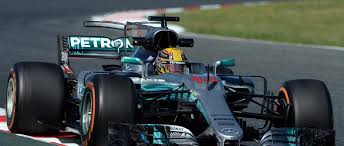It was Hamilton who scored a win at the Spanish Grand Prix and all thanks to superior strategy and some help from his teammate, Lewis Hamilton tightened the early title race in Formula One after beating Sebastian Vettel to win the Spanish Grand Prix on Sunday. Hamilton saw his advantage of a pole position evaporate when Vettel beat him to the first corner, but Mercedes’ decision to have Hamilton finish the race on faster tires allowed the British driver to overtake Vettel’s Ferrari with more than 20 laps left. Hamilton would have had to leave his challenge until late if not for some assistance from teammate Valtteri Bottas, who held up Vettel before the Finn’s Mercedes broke down in a puff of smoke.
“This was the rawest fight I have felt in a long time. This is what the sport is meant to be, this is why I race – to have battles with him for the championship,” Hamilton said. “I just really have to congratulate and thank my team. They did a wonderful job with the strategy and the pit stops.” Hamilton’s second win in five races this season cut Vettel’s lead from 13 points to six heading into the Monaco GP. It was the three-time world champion’s 55th career victory and his second at the Circuit de Barcelona-Catalunya after first winning here in 2014.
Daniel Ricciardo brought his Red Bull across in a distant third place to complete the podium, his best result of the season. Indy 500 practice: IndyCar team owner Sam Schmidt started plotting Indianapolis 500 strategy even before Saturday’s race ended. He certainly wasn’t alone.
With Will Power dominating practice, qualifying and the IndyCar Grand Prix for his first win of the season, just about everyone else in Gasoline Alley began looking ahead to Monday’s opening practice for the Indianapolis 500. “Since we had such a crappy grand prix, I think (our focus) shifted 30 minutes ago,” Schmidt said shortly after the race ended. “Maybe even as much as an hour ago. We know we have good cars for the 500 and hopefully we can be as good as we were last year. Right now is when we start working on the cars for the 500.”
There’s no time to waste for anyone. In less than 48 hours, speedway workers must convert the track from the 2.439-mile, 14-turn road course into the traditional 2.5-mile oval. Crew members will scramble to change the cars to perform on four distinct corners and at speeds nearing or topping 230 mph. Strategists will plan when to run in qualifying trim, when to run in race trim and how weather could affect next week’s two qualification rounds and the May 28 race. Drivers will have to contend with much more traffic, with 33 cars expected to fill the traditional 11-row, three-car starting grid.
















